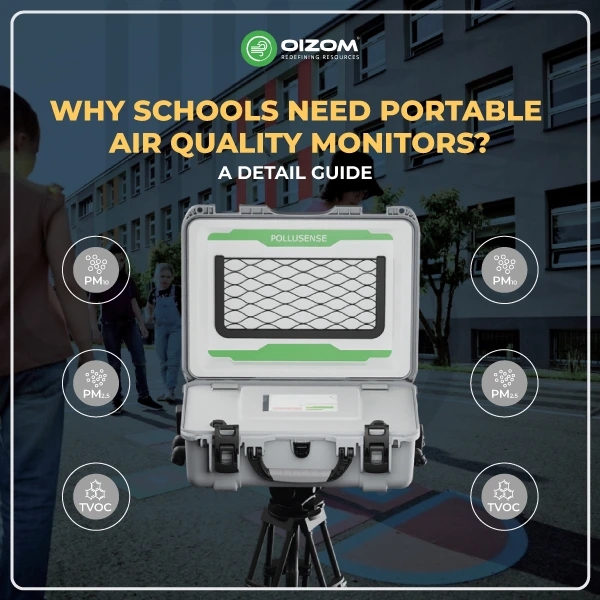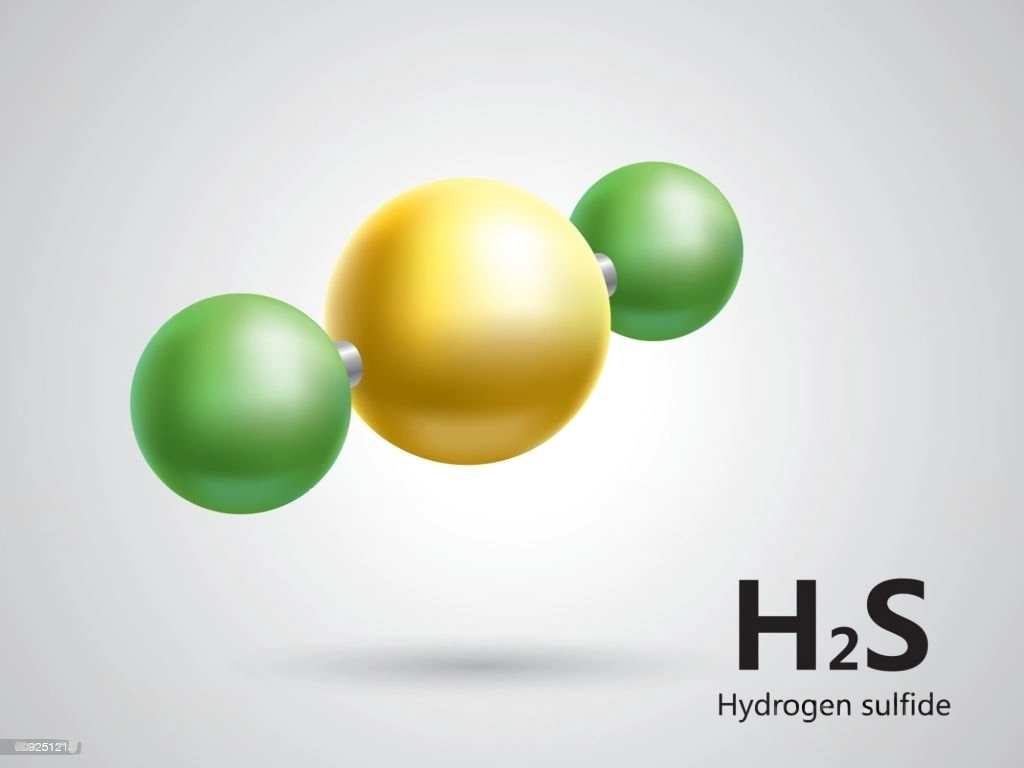Air pollution, a leading environmental threat to our health, exists both inside our homes and outdoors. The quality of the air we breathe is often overlooked, even though it plays a vital role in our overall well-being. Indoor and outdoor air pollution can contain a multitude of pollutants that can be detrimental to our health and the environment.
Oizom recognises the significance of understanding the differences and interplay between indoor and outdoor air quality. In this comprehensive blog, we will explore these aspects, examine their sources and impact on health, and look into strategies for improvement while incorporating Oizom’s insights into air quality monitoring.
What is Indoor Air Pollution?
What comes to your mind when we talk about indoor air pollution? Homes, offices, schools? And what kind of pollutants can you think about? Dust particles of various parameters? There is much more than this in indoor air pollution. Places like warehouses, underground train stations, and many more of such public and industrial places needs indoor air quality monitoring.
Indoor air pollutants range from biological contaminants like mild and bacteria to chemical pollutants, including toxic gases and volatile organic compounds (VOCs). Indoor air pollution refers to pollutants within enclosed structures such as homes, offices, schools, and other buildings.
The Subtlety of Indoor Pollution
Unlike outdoor pollution, indoor air pollution might not always be apparent. It could stem from everyday household products, construction materials, or our methods to keep indoor environments comfortable. For example, poor ventilation can trap pollutants inside, and something as mundane as cooking can release harmful particles into the air.
Oizom's Contribution to Indoor Air Quality Monitoring
Oizom’s air quality monitors, designed with cutting-edge technology, provide precise insights into indoor air quality, detecting various pollutants. Whether it’s a home, office, or public space, Oizom’s solutions ensure you breathe clean and healthy air.
What is Outdoor Air Pollution?
On the other hand, outdoor air pollution include vehicle pollutants, industrial activities, mining operations, landfills, etc. In many urban areas, outdoor air pollution levels often exceed the safety standards of regulatory bodies. Outdoor pollution is often more visible and pervasive than indoor pollution. It impacts human health and the environment’s health, including water bodies, soil, vegetation, and even the climate.
Factors Contributing to the Differences in Pollution Levels
Source of Pollutants:
Indoor pollutants usually stem from various sources within the enclosed environment, including construction materials, furniture, household cleaning products, engine gases, and human activities like smoking and cooking. Sources may also include heating and cooling systems, where improper maintenance can release harmful pollutants.
Outdoor pollutants, on the other hand, often originate from transportation (such as emissions from vehicles), industrial processes, agriculture, and natural occurrences like wildfires and volcanic eruptions. The complexity of sources in the outdoor environment can make control and regulation more challenging.
In urban areas, outdoor pollution can be influenced by the density of traffic and industrial activities. In rural regions, agricultural practices might significantly impact outdoor air quality. The source of pollutants is often more localised indoors, with control and management more straightforward.
The Concentration of Pollutants
Indoor air pollution can be much higher than outdoor levels due to limited ventilation. The lack of fresh air circulation means pollutants can accumulate quickly, leading to higher concentrations. This can be exacerbated in energy-efficient buildings where airflow is minimised to conserve energy. The immediate health impact can be more profound, leading to headaches, fatigue, respiratory issues, and long-term chronic illnesses.
Outdoor pollution concentrations can vary widely based on weather conditions, location, and time of day. Even though outdoor pollution can affect a larger population, the dilution of pollutants in the open atmosphere might reduce individual exposure levels. However, long-term exposure to even low outdoor pollution levels can still have significant health implications.
Comparison of Pollutant Concentrations in Indoor and Outdoor Environments
Particulate Matter (PM2.5 and PM10):
Particulate Matter, specifically PM2.5 (particles with a diameter of 2.5 micrometres or less) and PM10 (particles with a diameter of 10 micrometres or less), is often found in higher concentrations indoors. Indoor sources include cooking (especially frying and grilling), burning candles or incense, and smoking. The enclosed nature of indoor spaces can allow these particles to accumulate quickly.
Outdoors, PM is mainly produced by vehicular emissions, construction activities, industrial processes, and natural sources like dust storms and wildfires. While outdoor PM levels can be significant, especially in urban areas, the open environment often means particles are more widely dispersed.
Volatile Organic Compounds (VOCs):
VOCs are typically more concentrated indoors due to emissions from products like cleaning agents, paints, varnishes, and furnishings. Activities like painting or extensive use of cleaning products without adequate ventilation can lead to high levels of VOCs, which can cause symptoms like headaches, dizziness, or even more severe health effects with prolonged exposure.
Outdoor VOCs usually stem from vehicle emissions, industrial activities, and the use of pesticides in agriculture. Although these sources can release substantial VOCs, the open atmosphere generally allows for more dispersion and dilution.
Understanding the differences between indoor and outdoor air pollution is crucial for creating targeted strategies to mitigate their impacts. This understanding should guide policy-making, urban planning, building design, and individual practices to promote a healthier and more sustainable living environment. Addressing indoor and outdoor pollution requires coordinated efforts, considering each environment’s unique characteristics and challenges.
What Are Sources of Indoor vs Outdoor Air Quality?
Understanding indoor and outdoor air pollution sources is critical for effective management and control. Here, we delve into the complex sources that contribute to these two realms of air pollution:
Indoor Sources
Indoor air pollution is often underestimated, as it comes from various subtle and unexpected sources:
Mould
Mould growth is a common problem in many indoor environments, particularly in damp or humid areas such as bathrooms and basements. Mould spores can become airborne and contribute to respiratory problems, allergies, and other health issues. Proper ventilation, dehumidification, and prompt repair of leaks can help prevent mould growth.
Toxic Gases
Toxic gases like carbon monoxide and radon can seep into indoor spaces from poorly vented appliances, cracks in foundations, or the use of specific materials and products. Carbon monoxide poisoning is especially dangerous, as it’s odourless and can be lethal in high concentrations. Radon is a naturally occurring radioactive gas that can cause lung cancer over prolonged exposure. Regular testing, proper appliance maintenance, and sealing cracks can mitigate these risks.
Materials
Construction materials such as paints, adhesives, and engineered wood products often contain VOCs that can off-gas into the indoor environment. These compounds can cause headaches, eye irritation, and even long-term health issues. Choosing materials certified as low-emitting and ensuring proper ventilation during and after construction or renovation can greatly reduce exposure.
Household Products
Common household products like cleaning agents, air fresheners, and even personal care products can emit harmful chemicals into the air. These substances can cause immediate effects such as eye and throat irritation or long-term health effects with chronic exposure. Using natural, non-toxic alternatives and ensuring good ventilation can minimise these risks.
Outdoor Sources
Outdoor air pollution is a complex issue with multiple contributing factors:
Combustion of Fossil Fuels
The combustion of fossil fuels for transportation, electricity, heating, and industrial processes releases a significant amount of pollutants, including particulate matter, sulphur dioxide, nitrogen oxides, and carbon monoxide. These substances contribute to smog, respiratory problems, and even climate change. Transitioning to cleaner energy sources and improving energy efficiency can help reduce these emissions.
Landfills
Landfills generate methane, a potent greenhouse gas, as organic waste decomposes anaerobically. Leachate from landfills can also release harmful chemicals into the air. Implementing proper waste management practices, recycling, and composting can reduce the amount of waste in landfills and associated emissions.
Emissions from Vehicles
Motor vehicles are a major source of outdoor air pollution, particularly in urban areas. They emit pollutants such as carbon monoxide, nitrogen oxides, and hydrocarbons, contributing to smog formation and respiratory issues. Strategies like adopting cleaner fuels, promoting public transportation, and supporting electric vehicles can help mitigate these emissions.
Mining Operations
Mining activities can release dust, heavy metals, and other pollutants into the air, affecting both workers and nearby communities. Proper dust control measures, emission controls on machinery, and careful management of waste materials can minimise these impacts.
Industries and Factories
Industrial processes and factories significantly contribute to outdoor air pollution, emitting various pollutants, including VOCs, heavy metals, and greenhouse gases. Implementing cleaner production methods, adhering to regulations, and continuous monitoring can help control and reduce these emissions.
Health Effects of Indoor and Outdoor Air Pollution
Both indoor and outdoor pollution can have severe health impacts. Short-term exposure can lead to respiratory issues, headaches, and fatigue. In contrast, long-term exposure can result in chronic respiratory diseases, heart disease, lung cancer and even affect brain health and development in children.
Oizom's Contribution to Healthier Lives
Oizom’s air quality monitors help understand and control pollution, directly contributing to healthier lives. Whether it’s an industry, city management, or individual household, Oizom’s solutions ensure that air quality adheres to safety standards.
Importance of Air Quality Monitoring
Air quality monitoring plays a crucial role in managing and controlling indoor and outdoor pollution. It provides vital data that helps in various aspects of air quality management. Below, we explore the multifaceted importance of air quality monitoring:
Understanding Pollution Levels
Knowing the exact levels of various pollutants in the air is the foundational step in addressing air quality issues. Monitoring allows us to accurately measure concentrations of pollutants such as particulate matter (PM2.5, PM10), nitrogen oxides, sulphur dioxide, carbon monoxide, VOCs, and more.
This information is essential for identifying pollution hotspots, understanding temporal trends, and assessing compliance with air quality standards. With accurate data, interventions and regulations may be correctly guided and effective. Air quality monitoring serves as a diagnostic tool to understand the scale and nature of the pollution problem.
Health Protection
Air quality monitoring is a critical tool in protecting public health. By understanding what pollutants are present and in what concentrations, health authorities can issue warnings and advisories to vulnerable populations, such as those with respiratory conditions, children, and the elderly.
Monitoring also helps in the long-term study of the health effects of various pollutants, contributing to medical research and health policy formulation. The link between air pollution and diseases like asthma, heart conditions, and even premature death underscores the vital role monitoring plays in safeguarding health.
Environmental Protection
Air pollution doesn’t just affect human health; it also has severe impacts on the environment. Monitoring air quality helps understand pollution’s effects on ecosystems, wildlife, water bodies, and soil. Acid rain, caused by sulphur dioxide and nitrogen oxides, can damage forests and aquatic systems.
Monitoring these pollutants can guide interventions to prevent or mitigate these harmful effects. Tracking greenhouse gases helps in climate change mitigation efforts. Thus, air quality monitoring is essential to the broader environmental conservation strategy.
Compliance and Regulation
Regulatory bodies rely on air quality monitoring to ensure that industries, vehicles, and other emission sources comply with established standards and regulations.
Continuous monitoring helps identify violators, enforce penalties, and guide industries to adopt cleaner technologies and practices. It also provides governments with the necessary data to formulate, amend, and implement regulations based on current pollution trends and emerging challenges. In essence, monitoring is the backbone of regulatory enforcement in air quality management.
Public Awareness and Engagement
Real-time air quality monitoring data can be made available to the public through various platforms, including mobile apps, websites, and public displays. This transparency empowers citizens to make informed decisions about outdoor activities, particularly during pollution spikes.
It also fosters a sense of engagement and responsibility, encouraging public participation in pollution control initiatives. Public awareness campaigns leveraging real-time data can strongly impact collective behaviour and attitudes towards environmental stewardship.
Role of Oizom in Air Quality Monitoring
Oizom’s state-of-the-art air quality monitoring solutions have emerged as pivotal in advancing the field. Providing accurate, real-time data on various pollutants, Oizom’s systems are being used by governments, industries, researchers, and communities worldwide. Their user-friendly interface, robust technology, and customisable features make them a preferred choice for comprehensive air quality management. Oizom’s commitment to innovation and quality reflects its alignment with the global goal of cleaner air and a healthier environment.
Discover How Oizom’s Air Quality Monitoring Solutions Can Benefit Your Community
Air quality monitoring is not merely a technical exercise but a complex, multifaceted tool that intersects with health, environment, governance, and community engagement. Its importance in our modern world cannot be overstated, as it plays a vital role in the ongoing battle against air pollution.
Strategies for Improving Indoor and Outdoor Air Quality
The fight against air pollution requires a multifaceted approach that involves various strategies tailored to the unique challenges of both indoor and outdoor environments. Here, we will explore these strategies:
Indoor Strategies
Improving indoor air quality is vital for ensuring the well-being of occupants. Here are some comprehensive strategies:
Ventilation
Ventilation plays a crucial role in maintaining healthy indoor air quality. Stagnant air can lead to a build-up of pollutants. Proper ventilation systems that allow fresh outdoor air to replace indoor air help dilute contaminants and maintain a healthy environment. Natural ventilation through windows or mechanical systems can be used, depending on the design and location of the building. Regular maintenance of these systems is also essential to ensure their effectiveness.
Choosing Low-emission Products
Using low-emission products in construction and interior design can significantly reduce indoor pollution. Materials like paints, adhesives, and furnishings can off-gas harmful VOCs. Opting for products certified to have low or no VOC content, made from natural or recycled materials, can help mitigate this issue. Checking labels and certifications and consulting with experts can guide these choices.
Humidity Control (H4)
Controlling indoor humidity is essential in preventing mould growth and controlling dust mites. A level between 30-50% is considered healthy. Dehumidifiers, proper ventilation, and moisture-resistant materials can assist in maintaining this balance. Regular checks for leaks or water damage are also vital in preventing excess humidity.
Regular Cleaning
Regular and thorough cleaning helps remove dust, allergens, and other pollutants from indoor spaces. Using vacuum cleaners with HEPA filters, microfiber mops, and non-toxic cleaning products can maximise effectiveness without introducing new pollutants. Cleaning air ducts and replacing filters are also important parts of this strategy.
Air Purification
Air purifiers equipped with HEPA filters and activated carbon can help in removing particulate matter, allergens, and odours. Placement, size, and type of air purifiers should be carefully considered to match the specific needs and layout of the space. Regular maintenance and filter replacement are vital for their efficacy.
Outdoor Strategies
Outdoor air quality management is a complex issue that requires a combination of regulations, technological advancements, and societal changes:
Regulation and Enforcement
Government regulation and enforcement of emission standards are pivotal in controlling outdoor pollution. Regular inspections, fines for violations, and encouraging compliance through incentives are strategies that can be employed. Collaboration between different levels of government, industries, and communities is essential to create and enforce effective policies.
Promoting Clean Energy
Transitioning from fossil fuels to renewable energy sources like wind, solar, and hydroelectric power is vital in reducing greenhouse gases and other pollutants. Government incentives, industry investments, and public awareness campaigns can drive this transition. Developing and utilising energy-efficient technologies in all sectors can also make a significant impact.
Public Transportation
Promoting public transportation reduces the number of private vehicles on the road, thereby reducing emissions. Investments in reliable, clean, and efficient public transportation systems and urban planning supporting walking and cycling can create a significant positive impact. Incentives for using public transportation, carpooling, and adopting electric vehicles can further support this strategy.
Green Spaces
Creating and maintaining green spaces such as parks, gardens, and urban forests can act as a natural filter for pollutants. Plants absorb carbon dioxide and other harmful chemicals while providing oxygen. Urban planning that prioritises green spaces improves air quality and enhances the overall quality of life in urban areas. Community involvement in tree planting and care can enhance these efforts.
These strategies highlight the complexity of improving indoor and outdoor air quality. By adopting a combination of technological solutions, regulations, and lifestyle changes, we can make significant strides in achieving cleaner, healthier air.
Conclusion
Air pollution, both indoor and outdoor, continues to be a pressing environmental challenge that affects our health, well-being, and the planet. Understanding the sources, impacts, and differences between indoor and outdoor air pollution is essential in crafting effective strategies to tackle this issue. From individual choices in household products to global initiatives in reducing fossil fuel emissions, every action counts.
Oizom, with its advanced and accurate air quality monitoring solutions, stands at the forefront of this battle against air pollution. Oizom’s products empower everyone to breathe cleaner, healthier air by offering precise insights and data-driven decisions.
Whether you are an industry leader, city planner, or concerned citizen, Oizom has the right solutions for your air quality needs. Air pollution not only affects human health but also disrupts ecosystems—discover the Effect of Air Pollution on Plants and Animals to understand its broader environmental impact.






